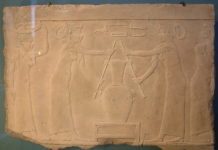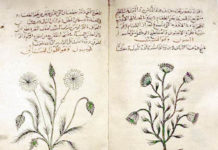Michael Crichton’s brilliant book may have popularised amber, but this gemstone has featured in man’s culture and history since the beginning of time. Amber ornaments from 13,000 years ago have been excavated from tombs in Northern Europe, making amber one of the oldest natural substances used for decoration.
The Origins of Amber
The oldest amber discovered can be dated to the Upper Carboniferous period, making these stones 320 million years old. This amber seems to have formed from the resin produced by flowering plants similar to those in abundance during the Jurassic period, which dates back 180 million years. In the Early Cretaceous period – 150 million years ago – production of amber increased, and samples containing insects began to form. The oldest pieces of amber containing insect inclusions are 133 million years old, and were discovered in Jordan and Lebanon in the Middle East.
It is believed the name “amber” is derived from the Middle English or Middle French word ambre, from the Medieval Latin ambra or from the Arabic word anbar, meaning “ambergris”. This word for the precious oil from the sperm whale became mixed up with the gemstone because both substances were found washed up on beaches. As the use of ambergris declined in around 1400 AD the word evolved to refer only to the gemstone.
Amber in Ancient Greek and Roman Culture
Both Greek and Roman cultures used amber in craft work and jewellery. Possibly the earliest written reference to amber was penned by the Greek philosopher Theophrastus in the 4th century BC. The Greek word for amber is electron, referring to the Sun God Elector. Roman philosopher, Pliny the Elder, wrote of insect inclusions in amber, and correctly concluded that at one time the gemstone had to be in a liquid form to trap the insect bodies. An indication of the value of amber at the time can be found in Pliny’s writing: “Among luxury goods it is valued so high that an amber human figurine, no matter how small, costs much more than men (slaves) in their prime”.
When the Greek gods banished Apollo from Mount Olympus he wept tears of amber. Another myth tells of how Phaethon lost control of his father Zeus’s sun chariot, which caught fire when he drove it too close to Earth. A furious Zeus killed Phaethon with a thunderbolt. Phaethon’s body fell into the Eridanus River, where it was recovered by the river’s nymphs who buried it on the river shores. Soon Phaethon’s sisters, known as the Heliades, came to his grave and mourned him night and day. Their sorrow was so immense their bodies began to rot, eventually rooting in the muddy shore next to Phaeton’s grave. Slowly they transformed into trees, and their tears into drops of amber.
Amber in Asian Culture
Because amber originates from trees Asian cultures believe it shares many of the tree’s spiritual qualities. Trees are considered bridges between Heaven and Earth; physical and spiritual beings whose roots bury deep into the earth while their branches and leaves reach into the sky. Sap represents the tree’s lifeblood, carry and transmitting its energy. This means amber has the ability to bring spiritual energy into the physical body, as well as helping those who need to feel more “grounded” to connect to the physical world.
In China amber is considered representative of courage, and is called “the tiger stone”. Amber was burned during important festivals to produce oil of amber which, when blended with nitric acid, produces artificial musk.
The Amber Room
Perhaps the most ostentatious use of amber was displayed in The Amber Room in Catherine the Great’s Russian palace. Once described as “the eighth wonder of the world”, the room featured amber and gold panels and Florentine amber mosaics with wood and mother-of-pearl inlaid floors. The room was destroyed by the Nazis in 1941, and the boxes containing the decorative pieces store disappeared. It is thought a fire at the end of the war destroyed the boxes and their valuable contents. In 1982 work began on reconstruction of The Amber Room, which was completed in 2003.
Amber for Protection
In ancient times travellers used amber for protection during their journeys. Amber is a protective stone with the power to bring good luck to its owner. Amber with special markings, such as the initials of the wearer’s name, is considered especially powerful. Amber enhances decision making, luck, memory and strength. This powerful gemstone is also said to absorb and turn negative energy into a positive force, so balancing one’s aggressive traits.
Colloquially, amber is nicknamed “the happy stone” because of its ability to overcome depression. It is associated with time, longevity and cycles, and is regarded as a sensuous and magnetic stone, insuring its wearer’s most attractive qualities and traits. However the power of this gemstone is such that amber should not be worn for too long or throughout the day. Amber relates to those born under the Zodiac signs Taurus, Leo, Virgo and Capricorn.
Amber in Folk Medicine
Early physicians used amber to treat heart problems, arthritis and teething in infants. Modern health practitioners and faith healers use amber to treat eye and teeth disorders, headaches, rheumatic pains, bronchial problems and glandular swellings of the lungs and throat. It is claimed amber can relieve stomach pain and improve the functions of the kidneys and liver. Amber is used to treat jaundice and the common cold. It also balances the endocrine and digestive system.
Amber benefits the bladder and the spleen. It can be used for detoxification and as protection from radiation. Because it emits a soothing energy a piece of amber placed in bathwater will relax the bather.








